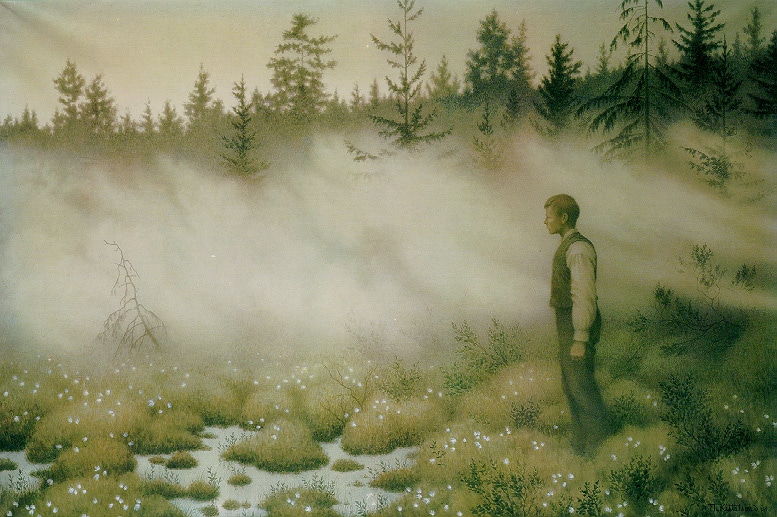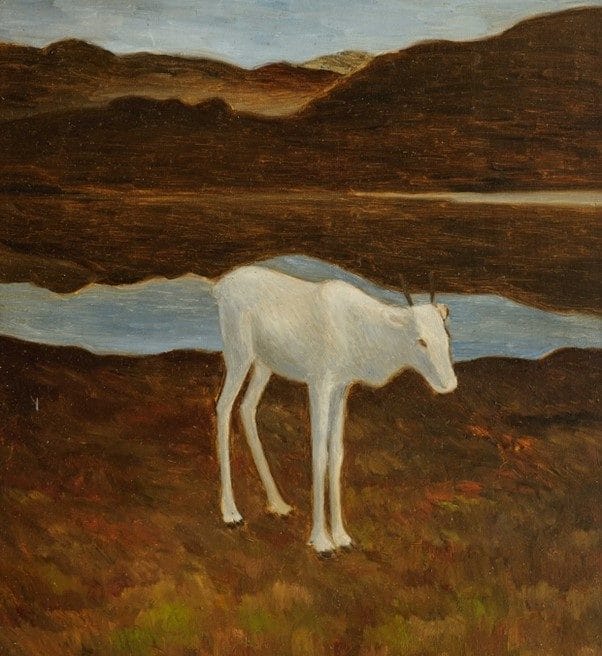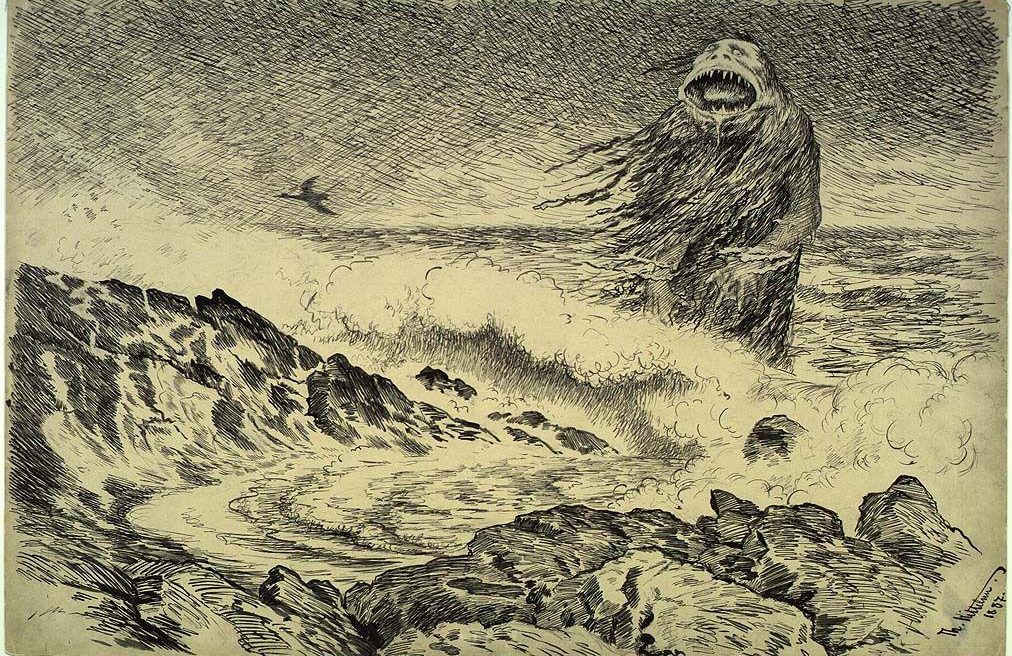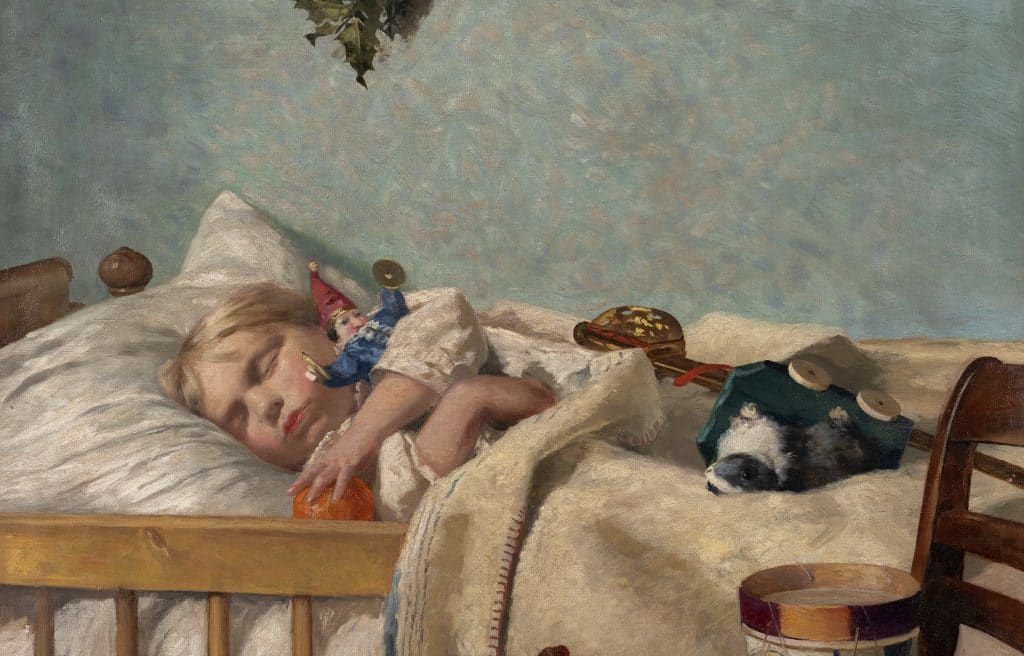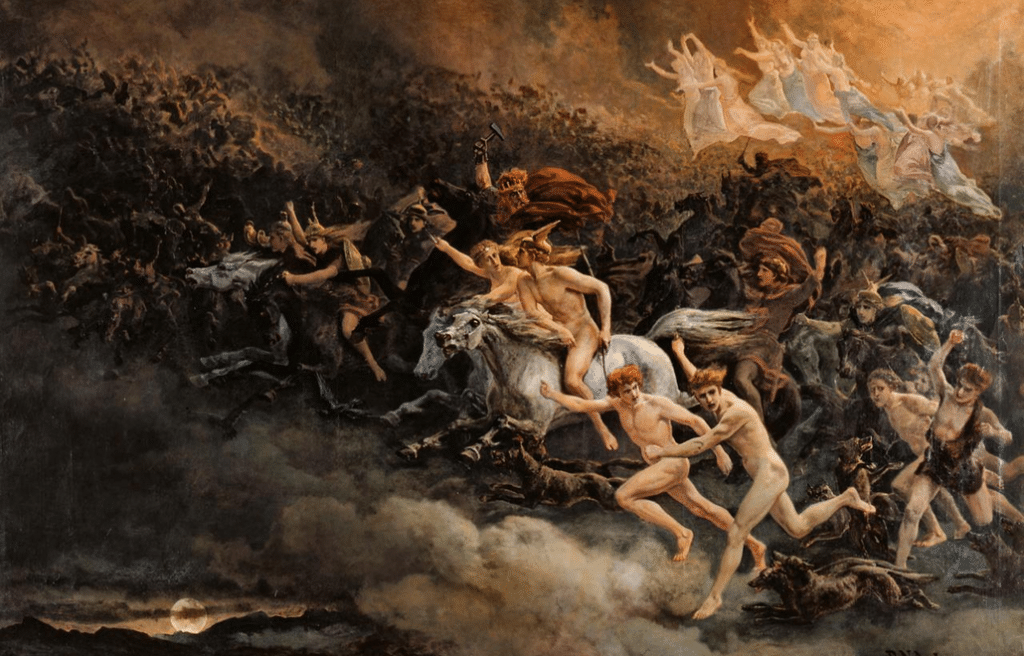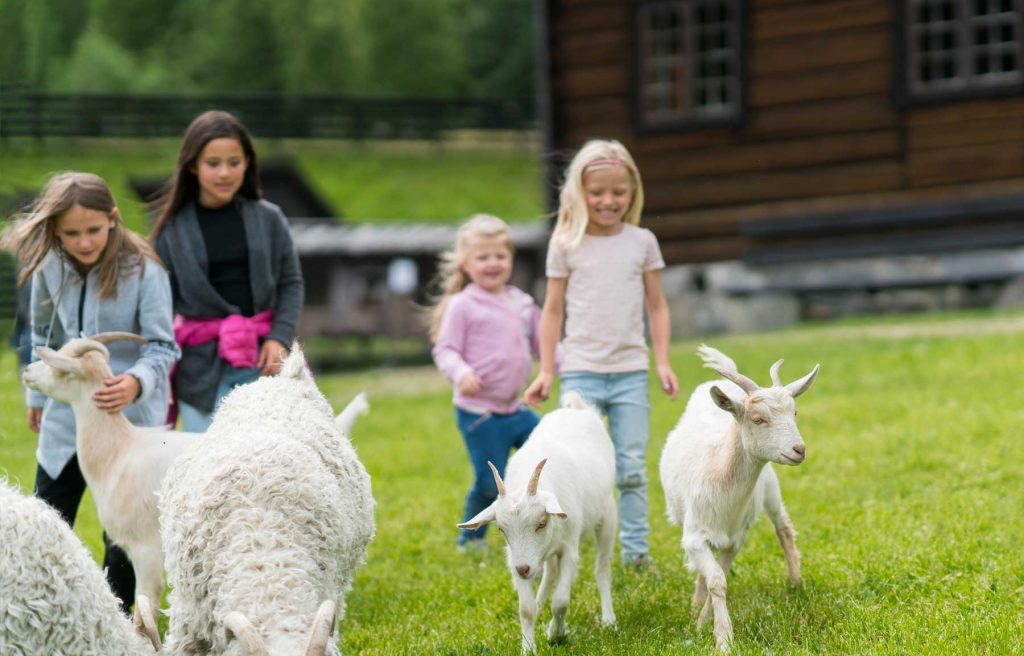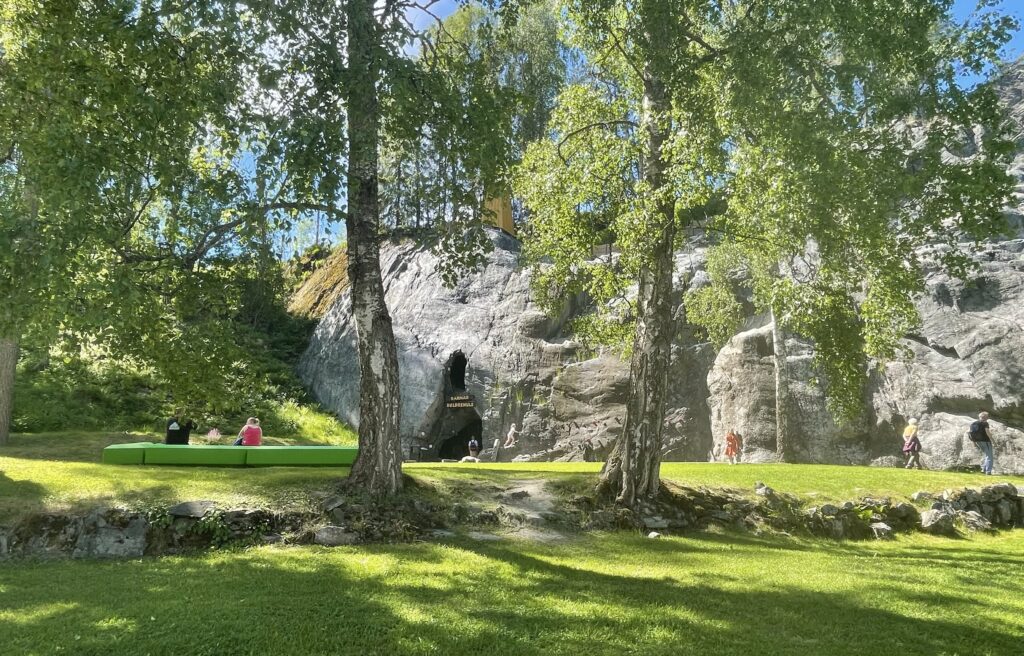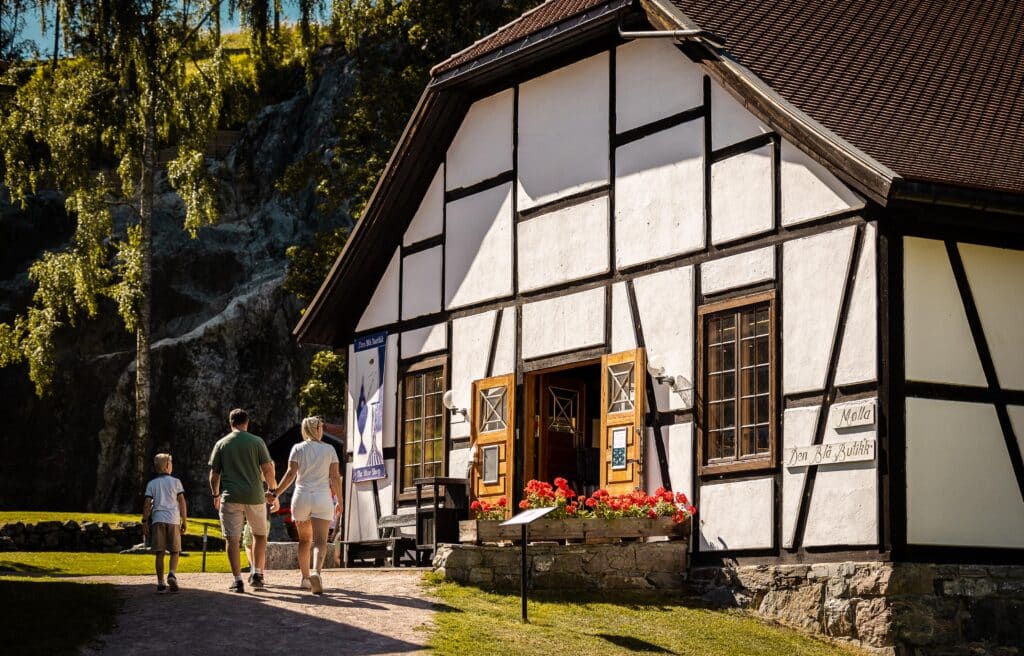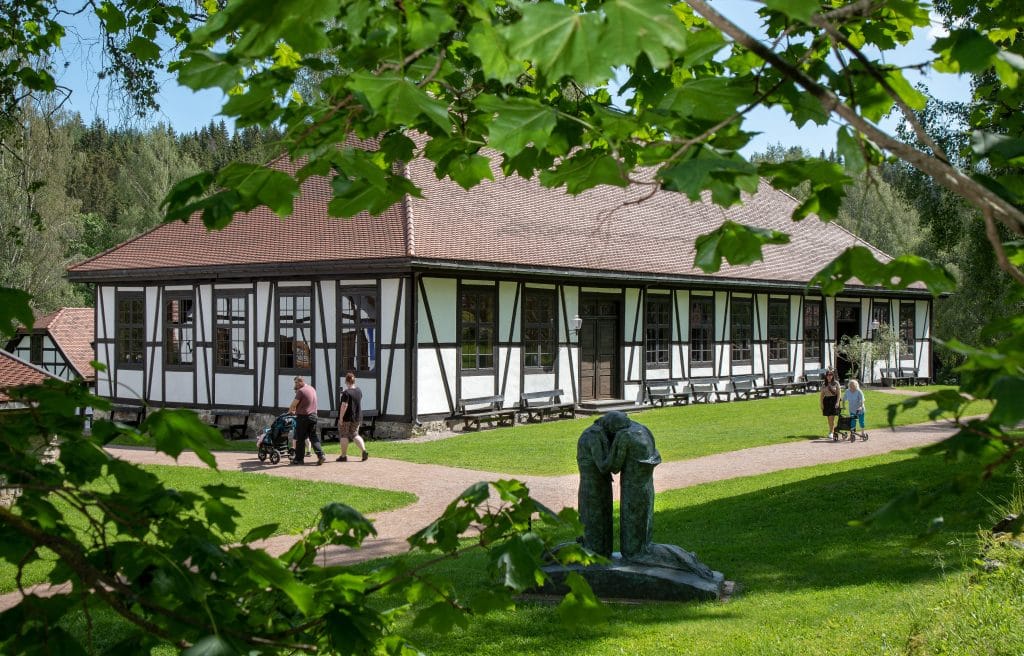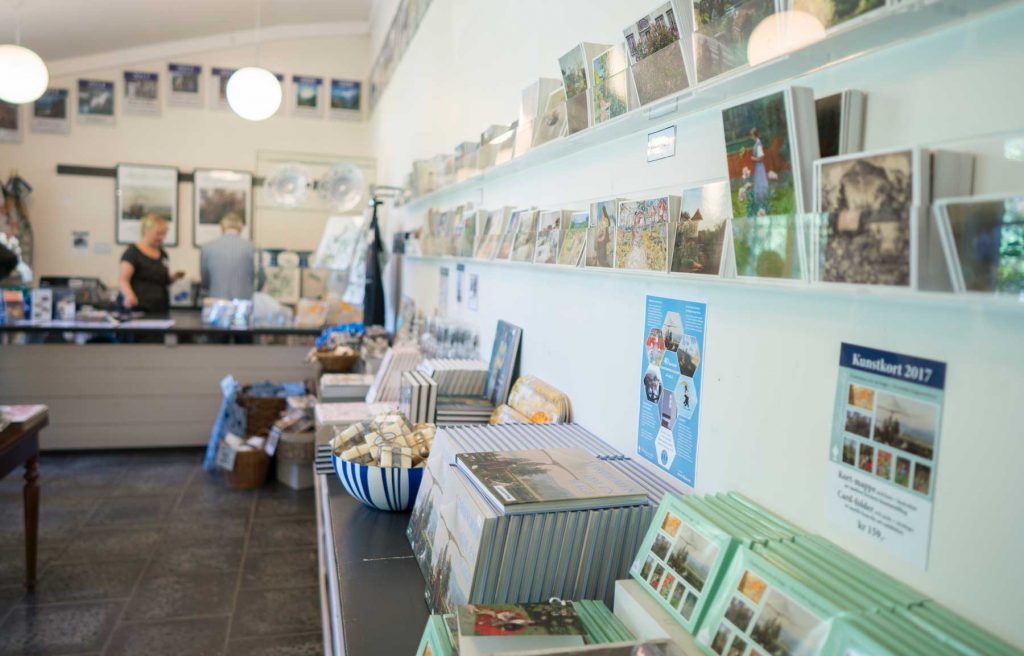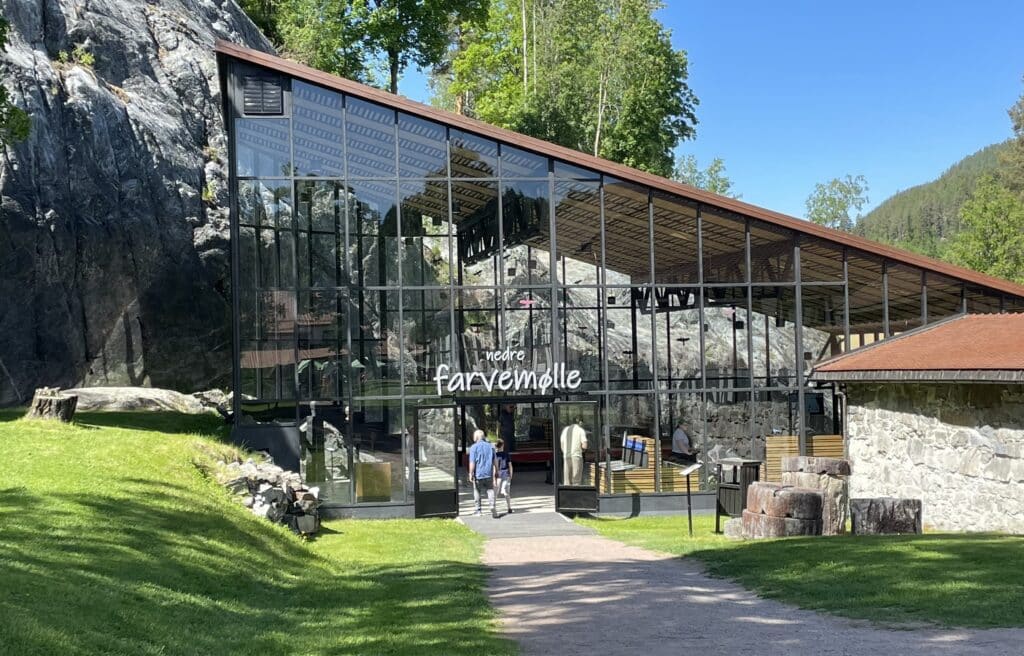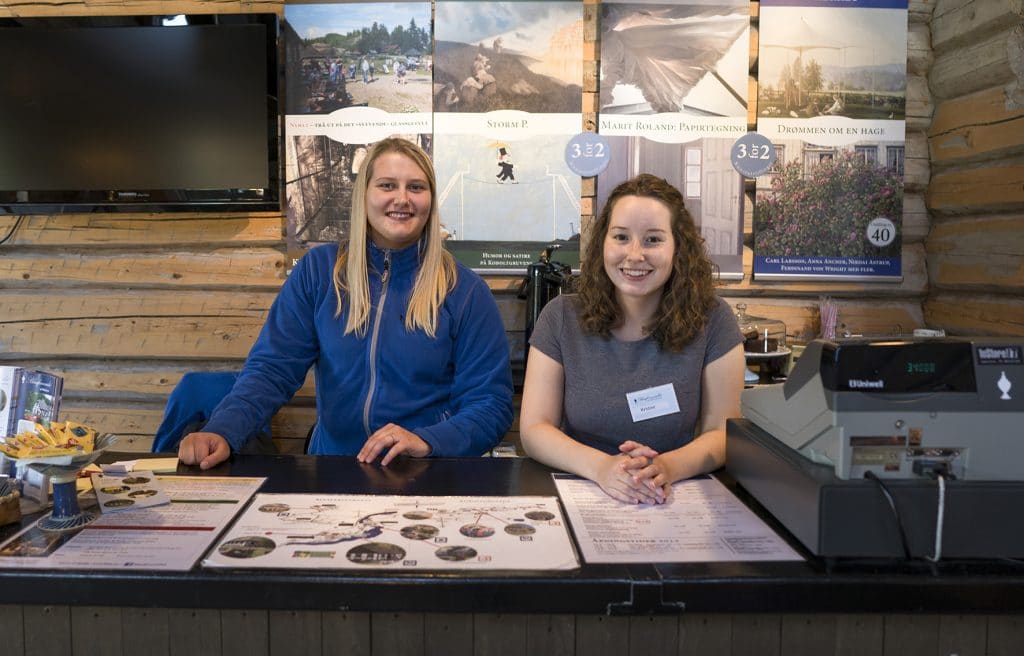2022 – Mellom to Verdener
Mysticism and myths in Norwegian art 1850–1950.
Let yourself be captivated by the mythical—by fairy-tales, myths and folktales.
Our world is based on myths and tales. That’s how we explain the inexplicable. The Cobalt Works Museum’s new exhibition, Between Two Worlds , explores the various depictions of mythical creatures, landscapes, and stories in Norwegian art from the middle of the 19th to the middle of the 20th century.
It is in our nature to tell stories, both fictional and non-fictional. Through the tradition of oral storytelling, old folktales have been passed down from one generation to another.
In the Nordic countries, however, these stories were not recorded until relatively late. The Old Norse kings’ sagas were collected by poet and historian Snorri Sturlason during the thirteenth century. The scholar Peter Christen Asbjørnsen began collecting local fairy tales and folk tales in Norway in the mid-1830s. His collaboration with poet and pastor Jørgen Moe led to the publication of Norwegian Folk Tales in 1841. The first book on Norwegian folklore, in 1833, was written by historian and minister Andreas Faye. Portraying old folk tales and fairy tales became popular among 19th- and 20th-century Norwegian artists—not only because they often illustrated books of fairy-tales but also because they had a keen interest in the subject.
The exhibition at the Cobalt Works Museum is about the intersection between two worlds: the real and the mythical.
Exhibited artists:
Theodor Kittelsen, Erik Werenskiold, Gustav Wentzel, Harald Sohlberg, Christian Skredsvig, Hannah Ryggen, Adolph Tidemand, Olaf Lange, Gerhard Munthe. Gustav Vigeland, Eilif Peterssen, Nikolai Astrup, Fridtjof Nansen, Peter Nikolai Arbo, Kitty Kielland, Teddy Røwde, Einar Berger, Henrik Sørensen, John Savio, Wilhelm Wetlesen, Frants Bøe, Thorolf Holmboe, Per Krohg, Hans Heyerdahl. Louis Moe, Vincent St. Lerche, Øivind Heggtveit, Wilhelm Peters, Christian Krohg, Carl Sundt-Hansen, Lars Jorde, Knud Bergslien, Nils Bergslien, Joronn Sitje, Andreas Bloch, Ludvig Munthe, Otto Sinding og Oluf Wold-Torne.
